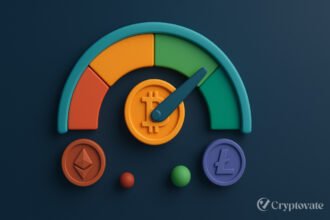– Ad –
| Getting your Trinity Audio player ready... |
Crypto whales are the hidden influencers capable of moving the entire market with just one transaction. Ever noticed Bitcoin suddenly plunging or soaring and wondered, “What caused that?” More often than not, it’s the result of a crypto whale making a big move. These powerful players hold vast amounts of cryptocurrency and can sway market trends—sometimes subtly, sometimes dramatically. But who exactly are these whales, how do they work, and why does it matter to you?
What is a Crypto Whale?
A crypto whale refers to an individual or entity that possesses a significant quantity of a specific cryptocurrency.
There’s no official threshold, but in Bitcoin’s case, owning 1,000 BTC or more is the unofficial line that puts you in whale territory. That’s tens of millions of dollars in one wallet. These aren’t everyday investors. These are the heavy hitters: early adopters, institutions, or entities with the kind of capital that can make markets move.
They exist in every crypto ecosystem, Ethereum, Solana, Dogecoin, you name it. And they play a very different game from the average retail trader.
Why Crypto Whales Matter
Here’s the thing: when you hold that much crypto, your actions echo.
1. Liquidity Crunch
Imagine a whale holding 50,000 BTC — that’s a huge chunk of the supply removed from circulation. With fewer coins available for purchase, buying pressure increases, which can drive prices up. This reduced liquidity is one reason why prices often surge when demand grows.
2. Market Volatility
Whales don’t always hold. When they sell, they often sell big. That one transaction can cause a massive dump in price, triggering stop-losses and spreading panic. The reverse is true too, whale buys can pump a coin within minutes. Retail investors usually don’t find out until after the move.
3. Governance Power
In proof-of-stake (PoS) networks, more tokens mean more voting rights. Whales can heavily influence proposals, staking decisions, and protocol changes. This is why decentralization purists often worry about whale dominance.
Also Read: All-Time High (ATH) in Crypto: What It Means and Why You Should Care
How to Track Crypto Whales
Blockchain is transparent. You can’t see their identity, but you can absolutely watch their moves.
Tools You Can Use:
- Whale Alert (Twitter + website): Real-time updates of large transfers
- Etherscan / Blockchain.com: Track wallet addresses and histories
- Glassnode, Nansen, Arkham: Deep data on wallet clusters, inflows, outflows
- DEX tools: Monitor large swaps and LP moves
When a whale moves funds to an exchange, it might indicate they’re getting ready to sell. If they’re moving to cold storage, they’re probably not dumping anytime soon.
Pro tip: Big movements tend to happen during low liquidity hours (late night UTC). That’s when they can have the most impact.
Common Whale Strategies
Whales don’t just YOLO trade like most of us. Their strategies are more sophisticated and sometimes shady.
1. Sell Walls and Buy Walls
They place massive buy/sell orders just to manipulate the order book and control price movement without executing the trade.
2. Stop-Loss Hunting
They push prices down just far enough to trigger retail stop-losses, then buy back cheap.
3. OTC Trading
Over-the-counter trades let whales exchange large volumes without crashing the market. But even those often leak into market sentiment.
4. Wallet Layering
They split funds across multiple wallets to mask movements. You might see 5 wallets with 10,000 ETH each, all owned by one entity.
Should You Be Worried About Whales?
It depends. Whales create volatility, yes. But they also provide early capital, keep prices stable during bear markets (by holding), and can signal long-term sentiment.
The trick is not reacting blindly. Panic selling after a whale move is rarely smart. Instead, use it as a signal to assess your position.
What You Can Do
If you’re a retail investor or builder, here’s how to play it smart:
- Set alerts on whale wallets
- Watch exchange inflows/outflows
- Use whale moves as liquidity signals, not panic buttons
- Diversify. One whale shouldn’t sink your portfolio
- Avoid leverage in times of high whale activity
Most importantly, stay curious but skeptical. Just because a whale moves doesn’t mean it’s time to ape in or out.
Final Thoughts: Don’t Fear the Whale, Study It
Crypto whales aren’t villains or heroes. They’re part of the ecosystem. They were early, lucky, rich, or smart enough to stack their bags, and now they move markets with them.
But here’s the good news: you’ve got access to the same data they do. The blockchain is public. And if you learn to track the signs, follow the flows, and understand the patterns, they’re not as mysterious as they seem.
Think of whales like weather patterns. You can’t stop the storm, but if you read the clouds right, you’ll know when to take shelter or set sail.
FAQs
What is a crypto whale?
A crypto whale is a person or organization that owns a substantial amount of cryptocurrency—typically over 1,000 BTC—and has the power to impact market movements.
How do whales affect crypto prices?
Whales can cause price swings by buying or selling large volumes, creating volatility or manipulating prices through strategic trades.
How can I track whale activity?
Use tools like Whale Alert, Etherscan, or Glassnode to monitor large transfers, exchange inflows, or wallet movements in real-time.
Should I worry about whale moves?
Not necessarily. Track their activity, avoid panic, and use their moves as signals to make informed decisions, not impulsive ones.


















